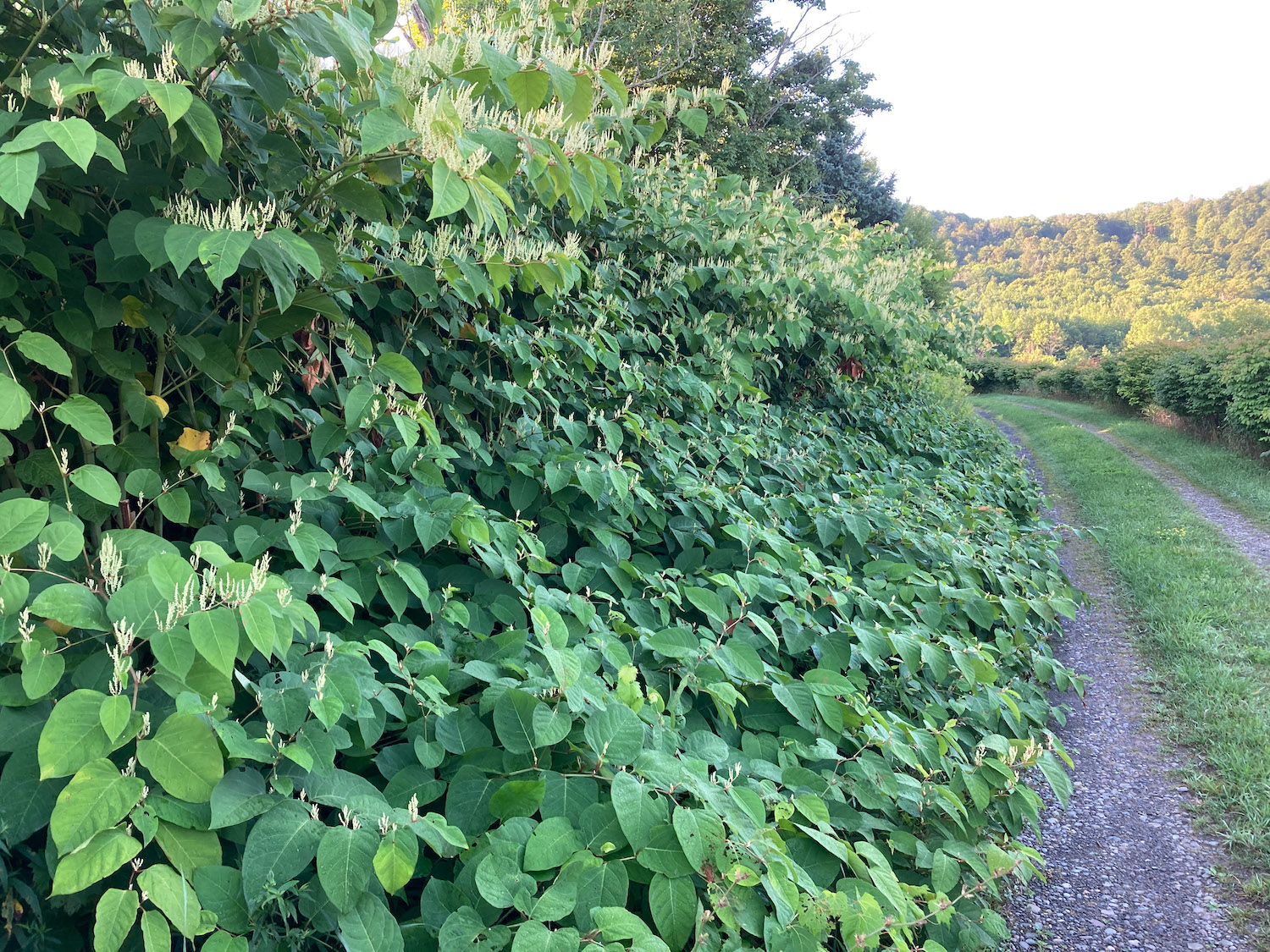Curye on Inglysch. Part IV: Forme of Cury (14th century).
205 Clarrey and Braggot.
Take … ounces of kanel & galinga, greyns de paris, and a lytel peper, & make poudur, & temper hit wyt god wyte wyne & [th]e [th]rid perte hony & ryne hit [th]orow a clo[th]. in [th]e same manere of ale, but take viii galones of god stale ale to on galon of hony ipurede clene, & boyle iii galonus of ale wyt [th]o hony. Or hit bygyne to boyle, do in [th]i spicery; sethyt fro [th]o fyre & styre hit soft & let hit cole, & ryne hit [th]orow a wyde bultyng clo[th]. Do hit in a clene vessel to [th]o ale, & do gode berme aboue, & hange in a cloute [th]ispyceri in [th]e ale & kouore hit wel, & wene hit is fourtene nyte holde, drynke [th]ereof.
Clarrey and Braggot
Take…ounces of cinnamon and galingale, grains of paradise and a little pepper and make powder and temper it with good white wine and the third part honey and run it through a cloth. In the same manner of ale, but take eight gallons of good stale ale to one gallon of honey poured clean and boil three gallons of ale with the honey. Before it begins to boil do in the spices, seethe over the fire and stir it gently and let it cool and run it through a wide bolting cloth. Do it in a clean vessel to the ale and do good barm above and hang in a cloth the spices in the ale and cover it well and when it is fourteen nights old drink thereof.
Curye on Inglysch. Part V: Goud Kokery, MS Royal 17. A. iii (14th century).
8 Ad faciendum brakott.
Take xiiii galouns of good fyn ale that the grout therof be twies meischid, & put it into a stonen vessel. & lete it sonde iii daies or iiii, til it be stale. Afterward take a quart of fyne wort, half a quart of lyf hony; & sette it ouer the fier, & lete it sethe, & skyme it wel til it be cleer. & put therto a penyworth of poudir of peper & i penyworth of poudir of clowis, & sethe hem wel togidere til it boile. Take it doun & lete it kele, & poure out the clere thereof into the forseid vessel, & the groundis thereof put it into a bagge, into the porseid pot, & stoppe it wel with a lynnen clooth that noon eir come out; & put thereto newe berm, & stoppe it iii dayes or iiii eer thou drinke thereof. Put aqua ardente it among.
8 To make braggot.
Take 14 gallons of good fine ale that the wort thereof be twice used, & put it into a stone vessel. & let it stand 3 days or 4, until it is stale. Afterwards take a quart of fine wort, half a quart of live honey; & set it over the fire, & let it simmer, & skim well until it is clear. & put thereto a pennyworth of powder of pepper, & 1 pennyworth of powder of cloves, & simmer it well together until it boils. Take it down, & let it cool, & pour out the clear [liquid] thereof [decant] into the previously mentioned vessel [stone vessel], & the settlement thereof into a bag, into the mentioned pot [stone vessel], & close it well with a linen cloth that no air comes out; & put thereto new berm, & close it 3 days or 4 before you drink of it. Add aqua ardente to it.
Dictionary of Obsolete and Provincial English by Thomas Wright (MS 14th century).
To make Bragotte.
Take to x galons of ale, iij potell of fyle worte, and iij quartis of hony, and put therto canell at iiij, peper schort or long, at iiij., galingale, at j., and clowys, at j., and gingiver at ij.157
To make braggot
Take to ten gallons of ale three pots of file wort and three quarts of honey and put thereto cinnamon at four, pepper short or long at four, galingale and one and cloves and one and ginger at two.
The Customs of London, otherwise called Arnold’s Chronicle by Richard Arnold (1503).
For Braket.
Take a pott of good ale and put therto a porcion of hony and peper in this maner, when thou hast good ale let it stone in a pot ij. Daies and tha drawe out a quarte or a potell of that ale and put to the hony and set it ouer the fire and lete it seethe well and take it of the fire and scinne it clene and than put thertoo the peper and the set he on the fire and lete hem boyle wel togedur with esy fir; but peper take iiij. gallons of good ale a pynte of fyn tried hony and the mountenaunce off saucer full of poud’ of pepper, &ct.158
Jewell House of Art and Nature by Hugh Platt (1594).
74 The making of a Bragget, which is manie times mistaken for a Muskadell by the simple sort of people.
Put one part of smal Alewoort that is blood warm with sone part of clarified
Honie according to the maner set downe num.75 but put no Cloves therein in the clarifying. For the making of one Hogesheade of this Bragget which is aboute 63. gallons, you must take nine Gallons of this clarified Honie, and 54. gallons of strong new ale: when your clarified hony hath stood one day, then mingle the same with your newe Ale in a Hogshead, first filling your Hogshead halfe full before put in your honie, and then hang this aromaticall coposition following in a long slender bag in the midst of the vessell vz. of Cinamon three ounces, ginger three ounces, greins 3. ounces, colianders one ounce, cloves one ounce, nutmegs oce ounce, long pepper halfe an ounce, Cardamomum one ounce and a halfe, liquerice one ounce, then fil up the vessell almost full with the rest of the new ale (yet some comment rather the putting in of the spices sonsistedly [?] then in a bag) bee sure to have foure of five gallons or more of the same newe ale, to fill up the hogshead as it purgeth over continuallie. There is a lesser hole neere the bung hole in beere hogsheads, which must stande open whilest it purgeth, you must also be carefull in the beginning to give some little vent to the hogshead whilst it worketh: in three or foure moneths, it will be readie to drinke.
You must have a hazell sticke of the bignesse of a good cudgell, so great as may well enter in at the round bung-hole, and when you hogshead is about three quarters full, put in this stick, being sawed croswise at the end about one cubite in length, (the Vintners call it their parrelling staffe) as the aptest toole for this purpose. Beat with the said staffe the new ale and the honie togither a good prettie while, & when you have finished this agitation, fill up the vessel with the rest, and let it purge as before. If you finde your muscadell too thicke, after it hath stood 3. or 4. monethes, you may take a cane or pipe, made of Tinne plates, that will reach into the midst of the hogshead or somewhat more, stop the ende thereof and make some holes in the sides, and with a funnell you may poure more new ale into the Cane, and so make it thinner. This Cane is an apt instrument to conveie any liquor or compostition into a vessell of wine without troubling of the same, or turning uppe the lees, wherby you may draw the same fine presently.
Digby, Kenelm. 1669. The Closet of the Eminently Learned Sir Kenelme Digbie Opened
MR. WEBB’S ALE AND BRAGOT
Five Bushels of Malt will make two Hogsheads. The first running makes one very good Hogshead, but not very strong; the second is very weak. To this proportion boil a quarter of a Pound of Hops in all the water that is to make the two Hogsheads; that is, two Ounces to each Hogshead. You put your water to the Malt in the Ordinary way. Boil it well, when you come to work it with yest, take very good Beer-yest, not Ale-yest.
To make Bragot, He takes the first running of such Ale, and boils a less proportion of Honey in it, then when He makes His ordinary Meath; but dubble or triple as much spice and herbs. As for Example to twenty Gallons of the Strong-wort, he puts eight or ten pound, (according as your taste liketh more or less honey) of honey; But at least triple as much herbs, and triple as much spice as would serve such a quantity of small Mead as He made Me (For to a stronger Mead you put a greater proportion of Herbs and Spice, then to a small; by reason that you must keep it a longer time before you drink it; and the length of time mellows and tames the taste of the herbs and spice). And when it is tunned in the vessel (after working with the barm) you hang in it a bag with bruised spices (rather more then you boiled in it) which is to hang in the barrel all the while you draw it.

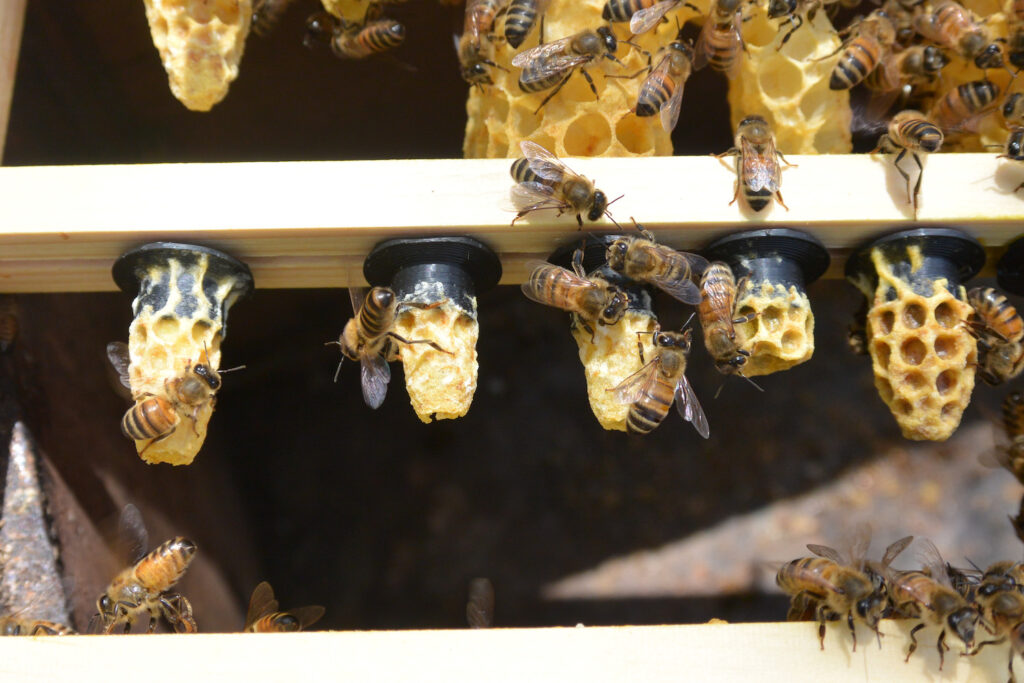
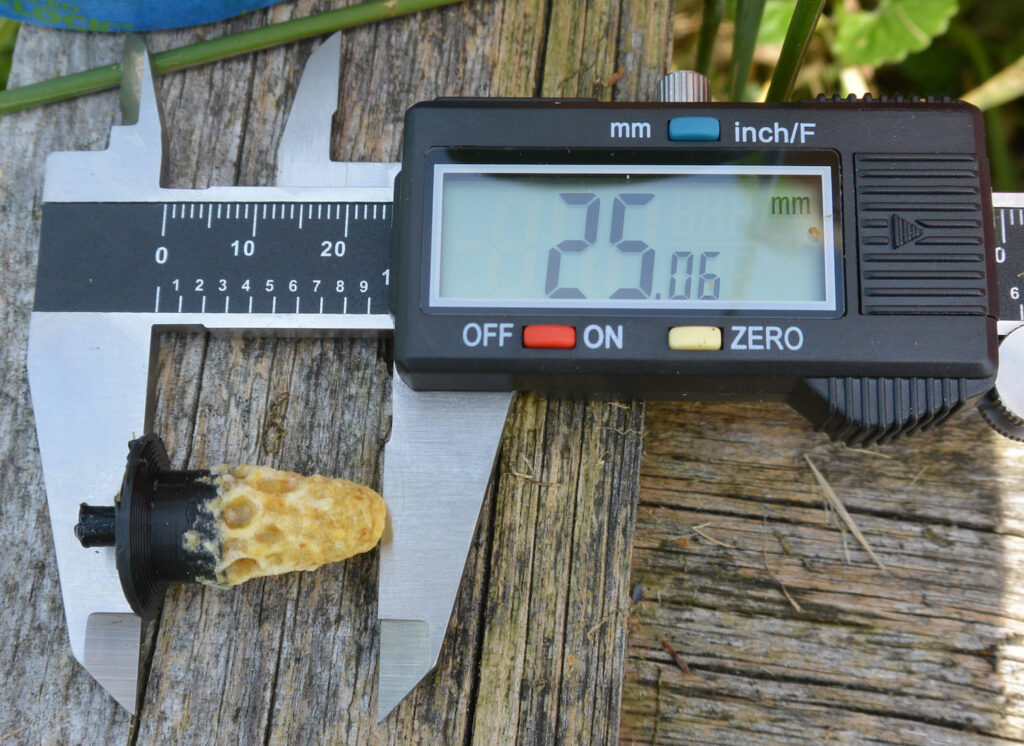
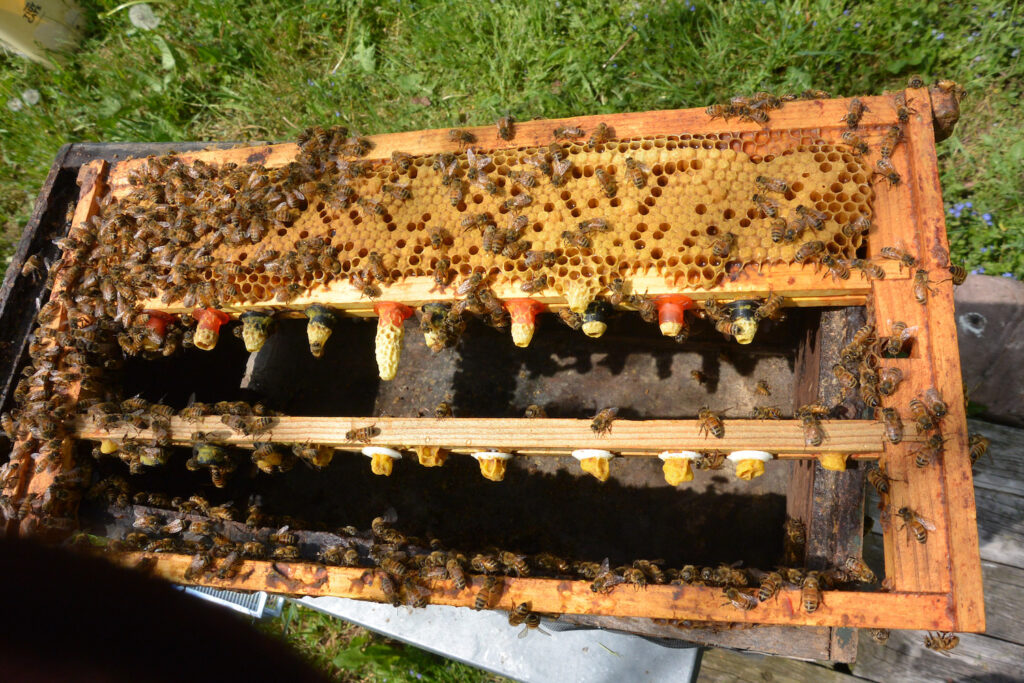
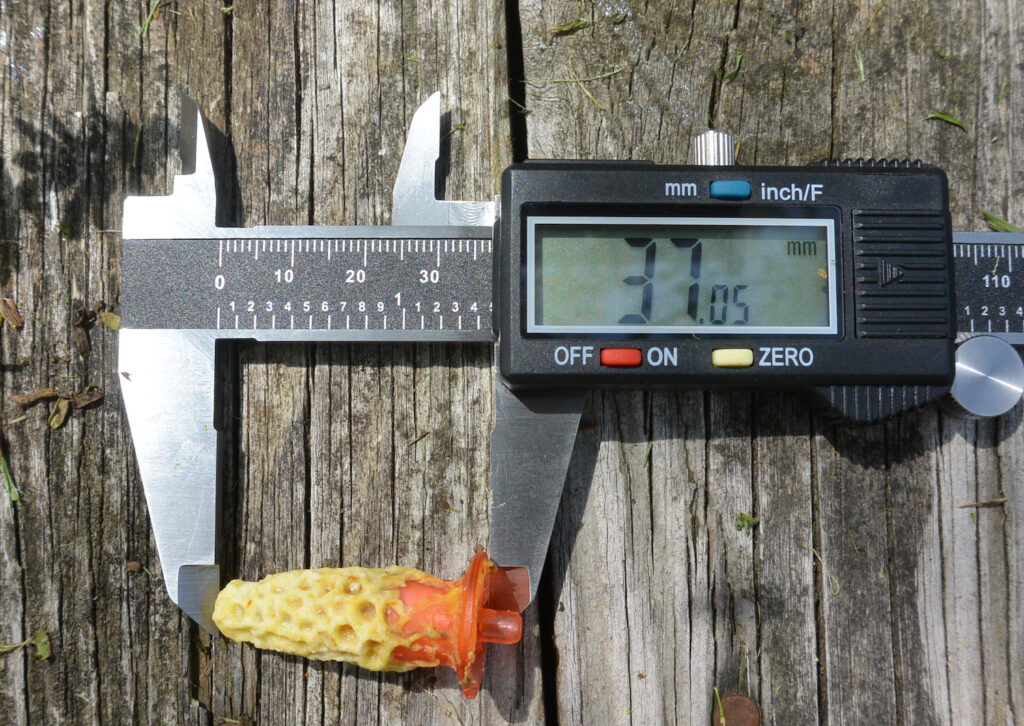
 This material is based upon work supported by the National Institute of Food and Agriculture, U.S. Department of Agriculture, through the Northeast Sustainable Agriculture Research and Education program under subaward number FNE24-102. Any opinions, findings, conclusions, or recommendations expressed in this publication are those of the author(s) and do not necessarily reflect the view of the U.S. Department of Agriculture.
This material is based upon work supported by the National Institute of Food and Agriculture, U.S. Department of Agriculture, through the Northeast Sustainable Agriculture Research and Education program under subaward number FNE24-102. Any opinions, findings, conclusions, or recommendations expressed in this publication are those of the author(s) and do not necessarily reflect the view of the U.S. Department of Agriculture.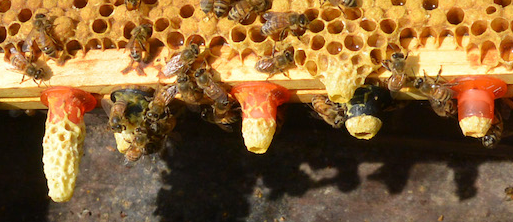

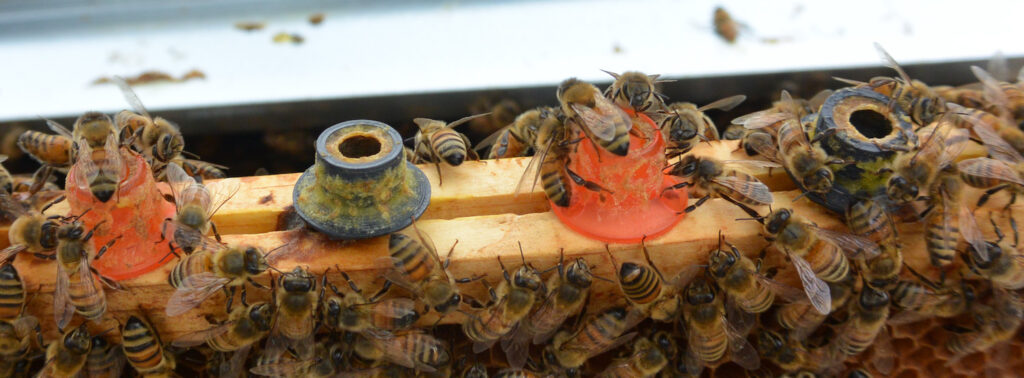 In Hive 1, I saw some promising signs: an egg!
In Hive 1, I saw some promising signs: an egg!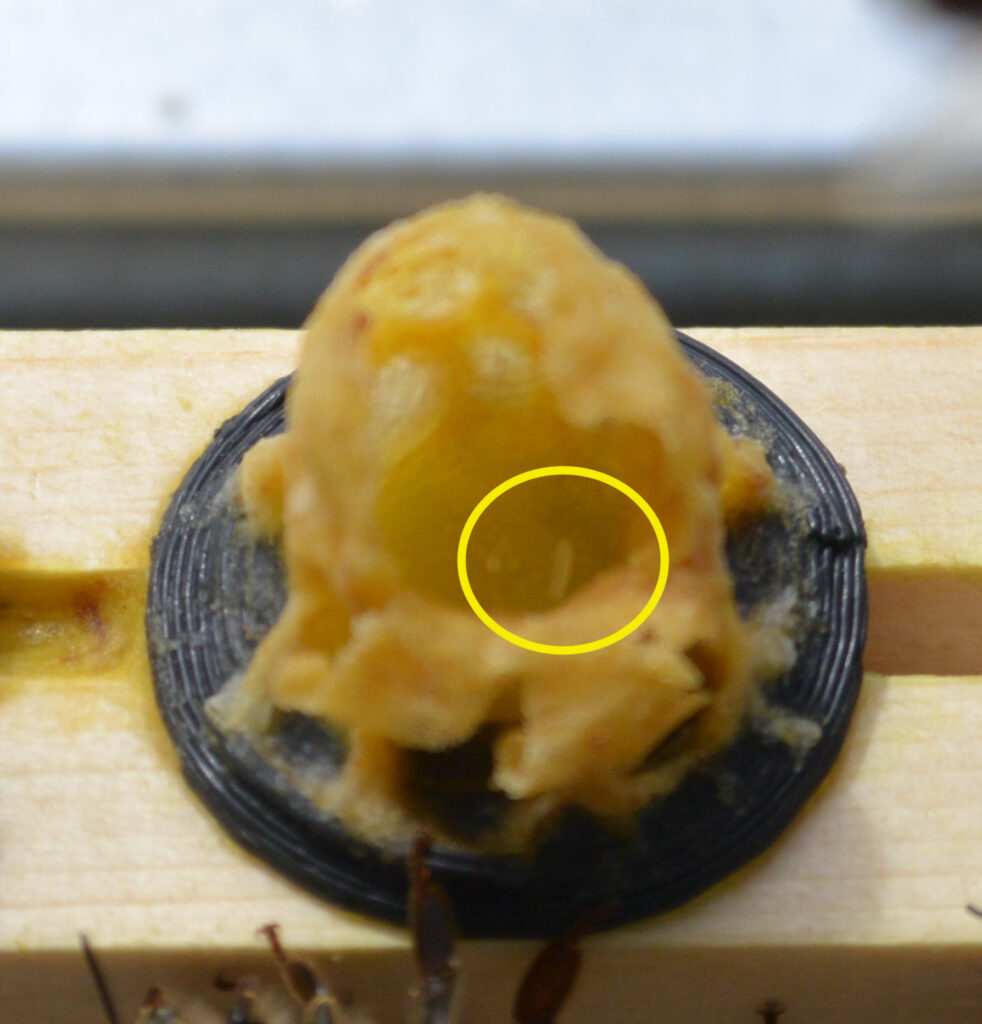
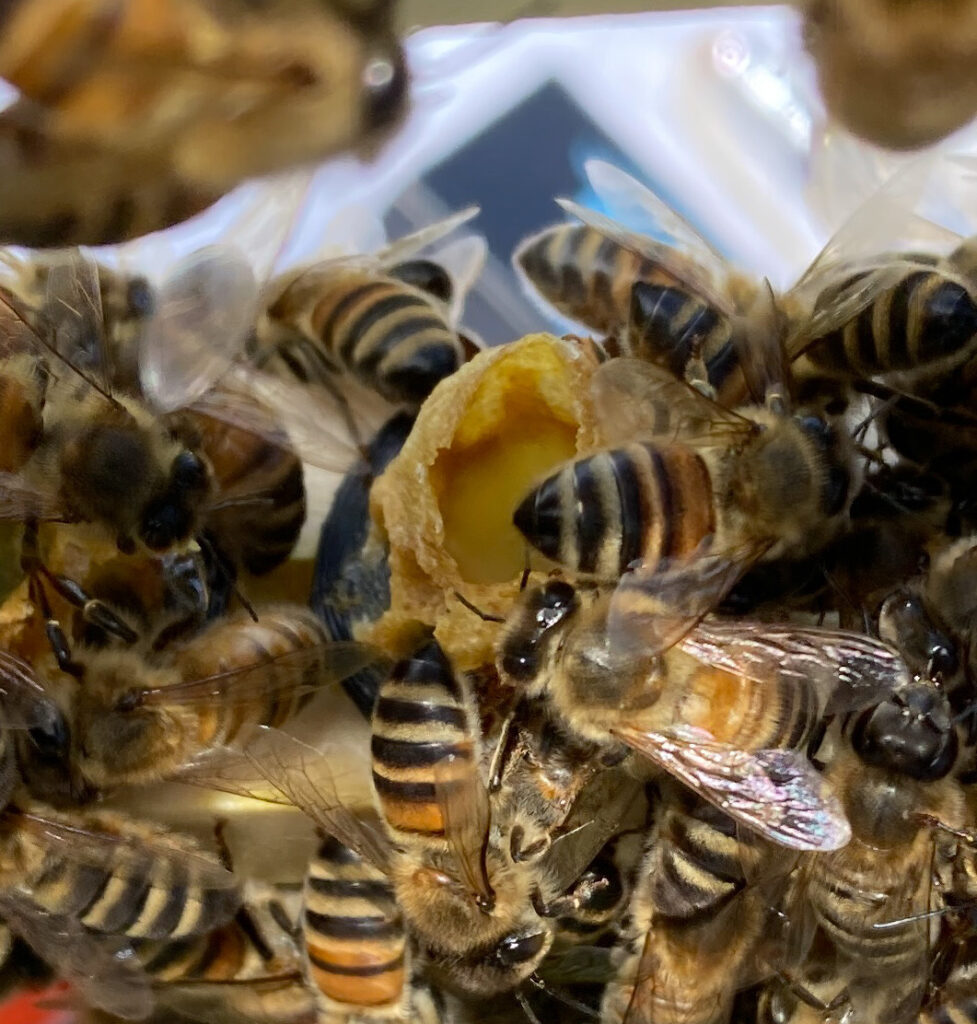 Now that I have queens in process, I’ll leave this for a week and then swap this frame for another model. Then I’ll know how many queen cells I have started on this queen bar.
Now that I have queens in process, I’ll leave this for a week and then swap this frame for another model. Then I’ll know how many queen cells I have started on this queen bar.
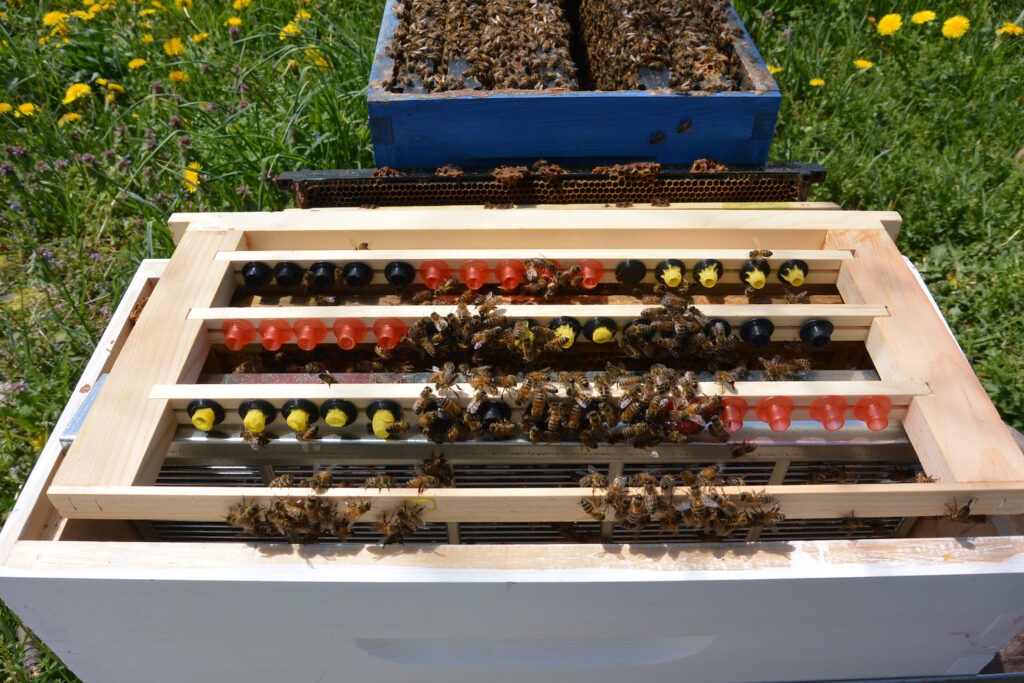
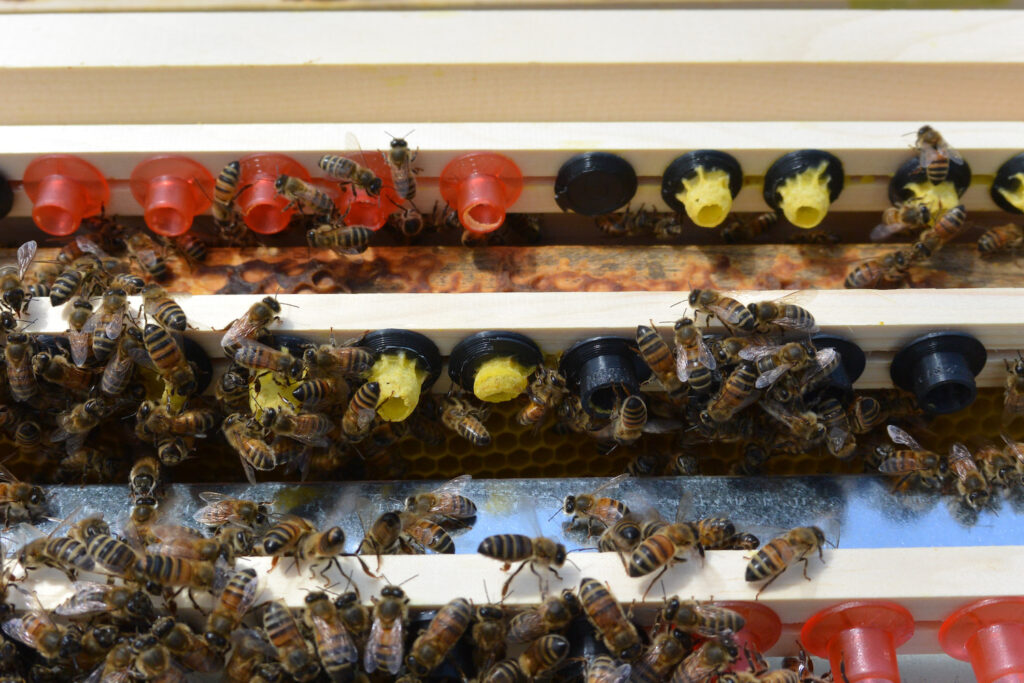

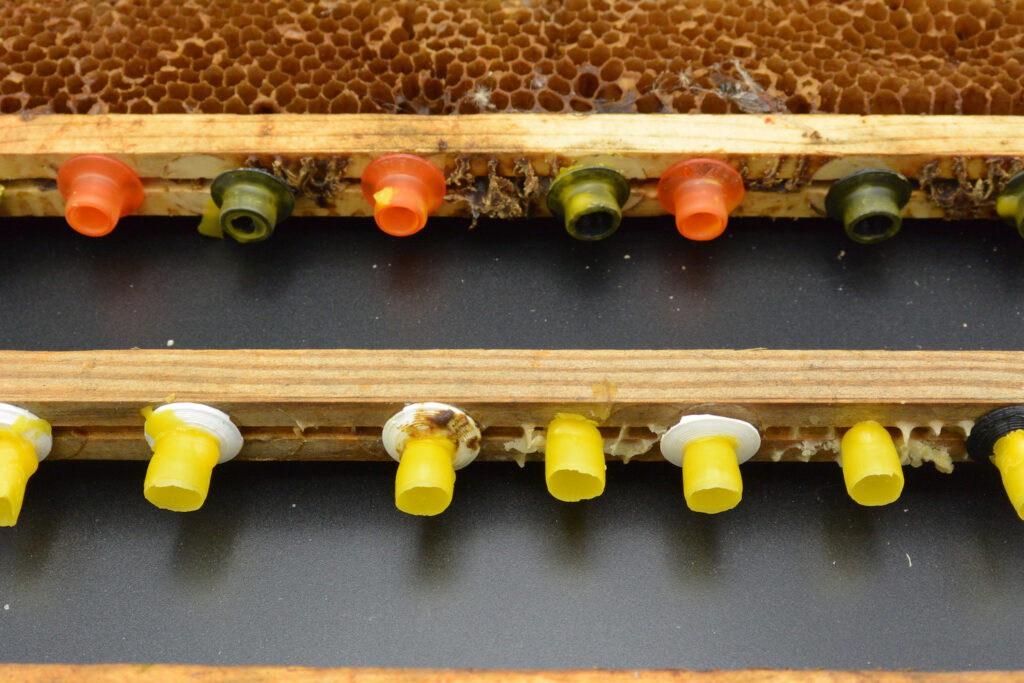
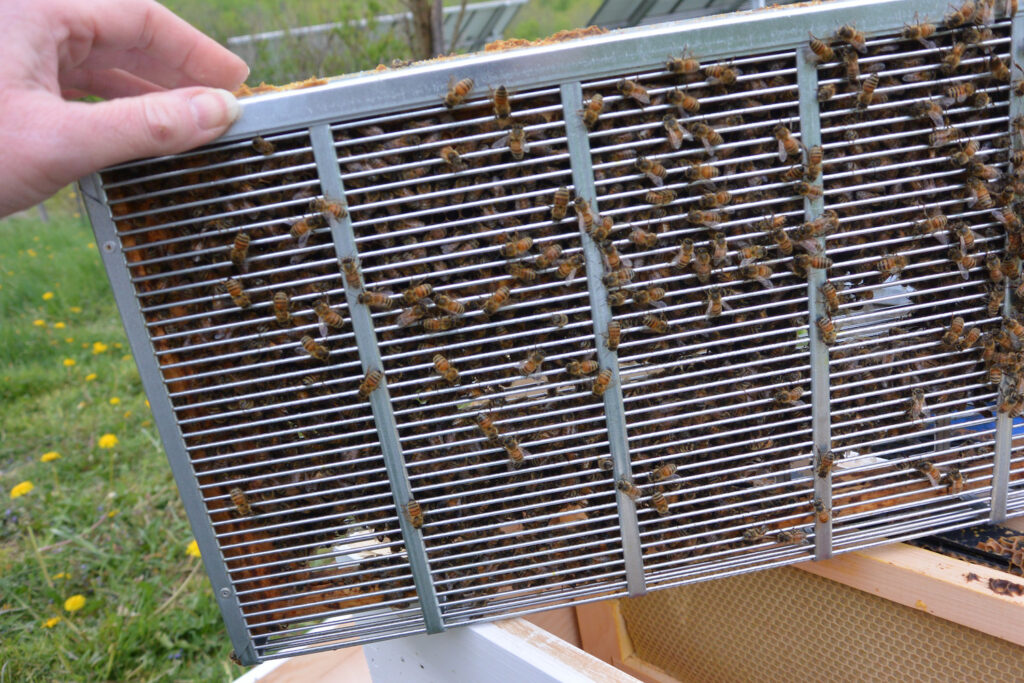
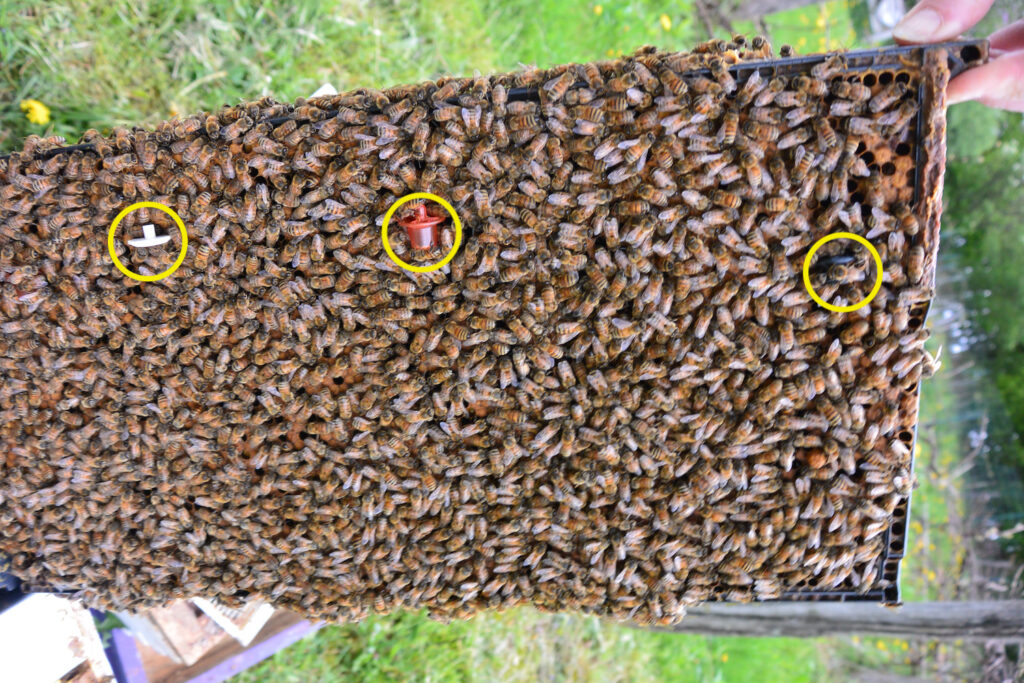
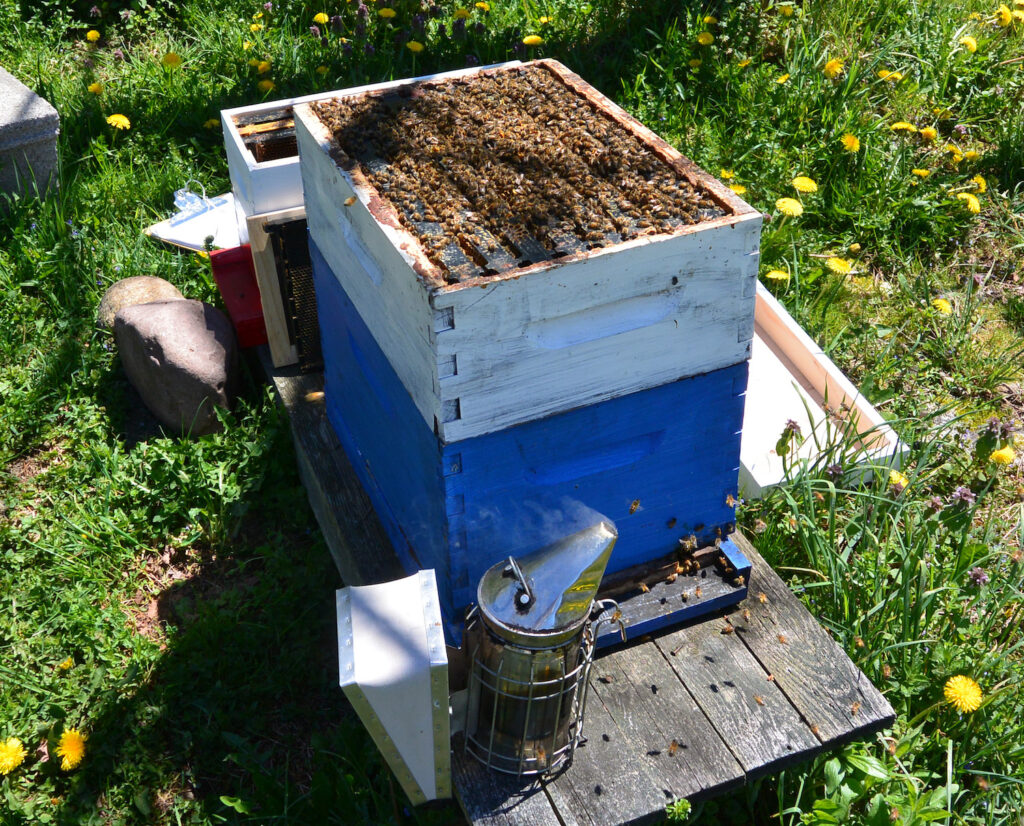 The bees look like that all the way to the bottom. When the foragers out gathering pollen and nectar return for the night, it’ll be chock-a-block full.
The bees look like that all the way to the bottom. When the foragers out gathering pollen and nectar return for the night, it’ll be chock-a-block full.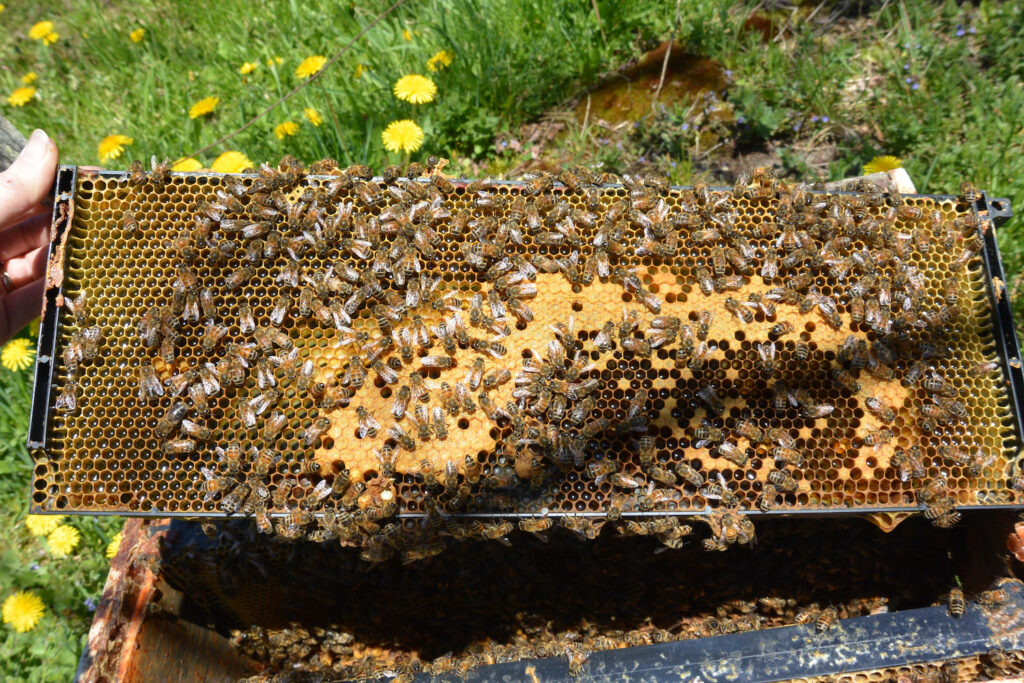
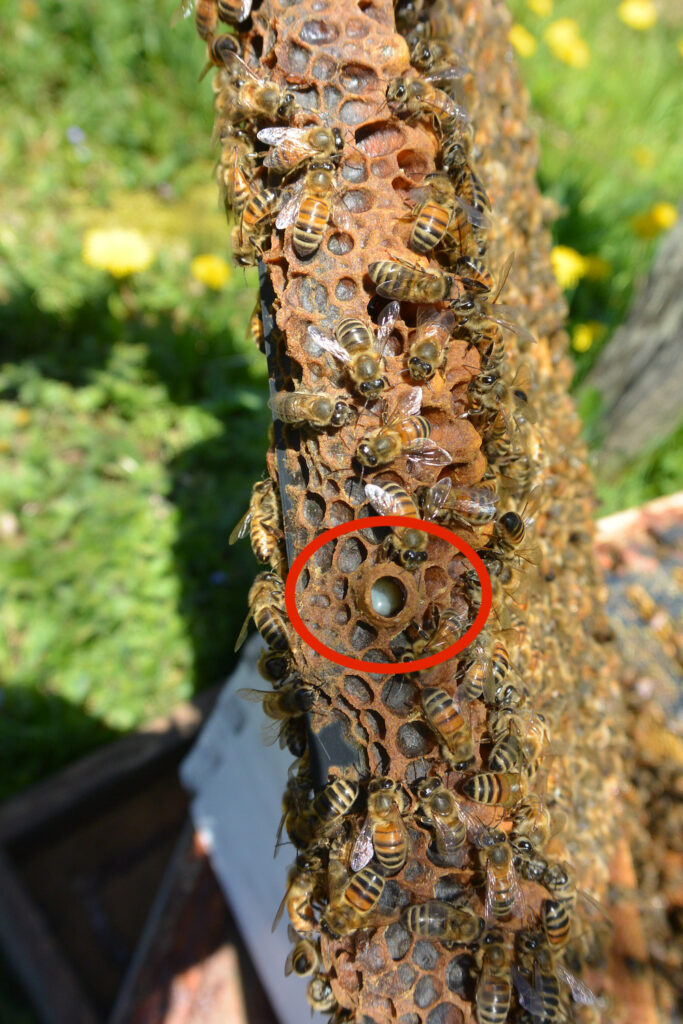
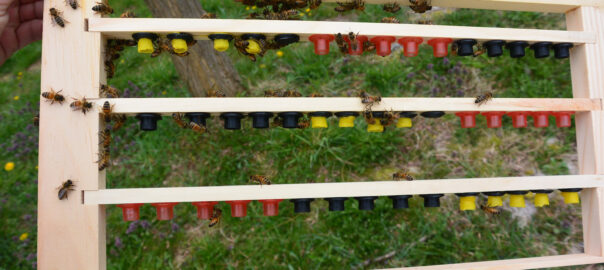

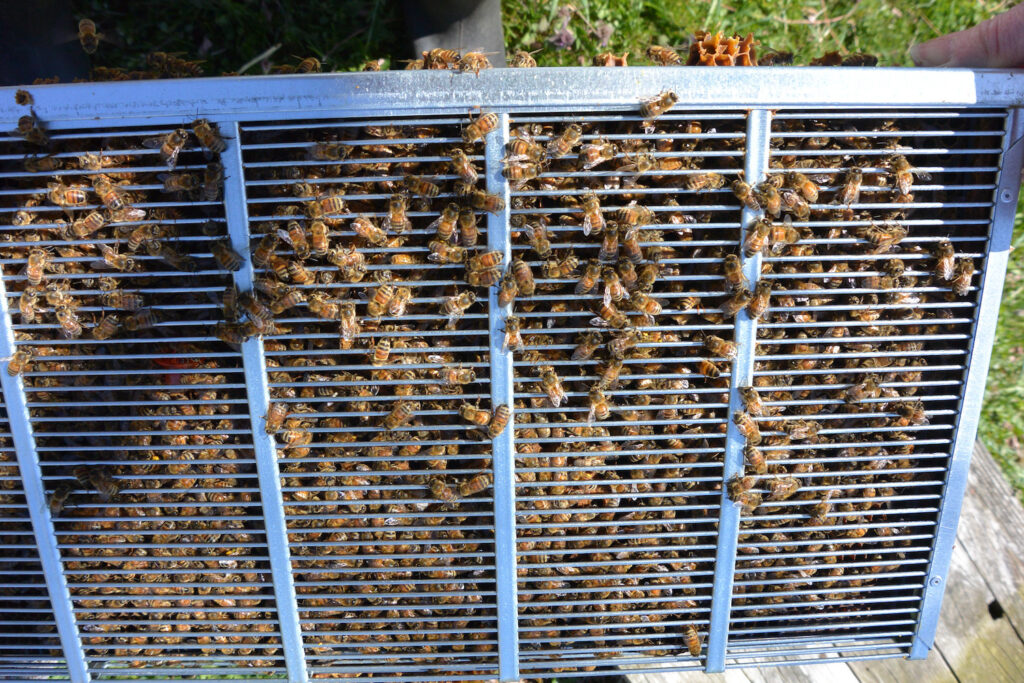
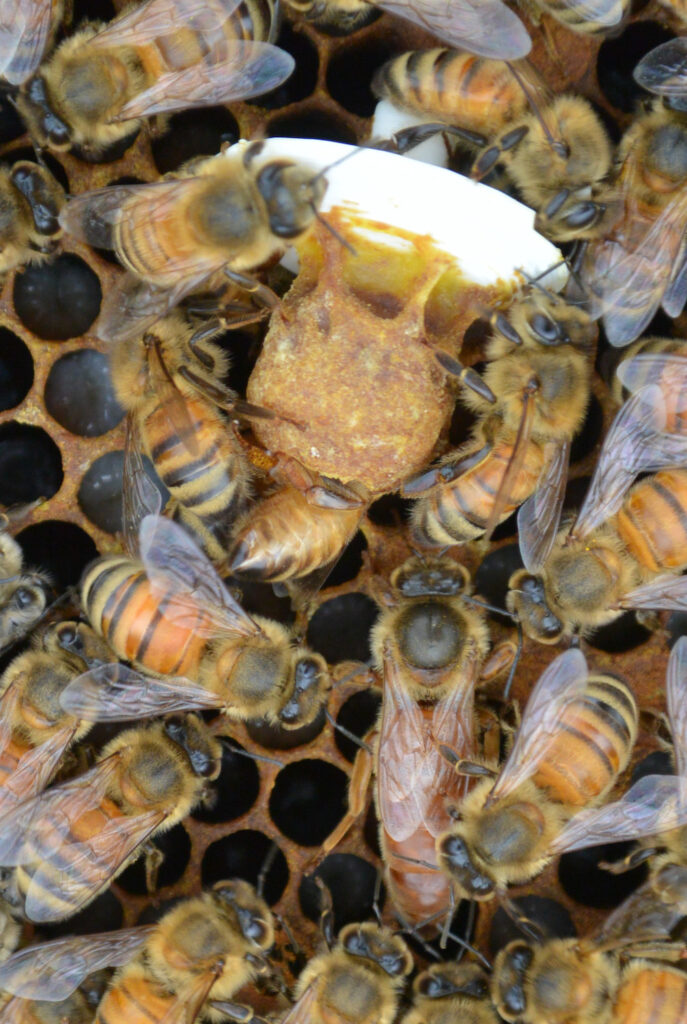
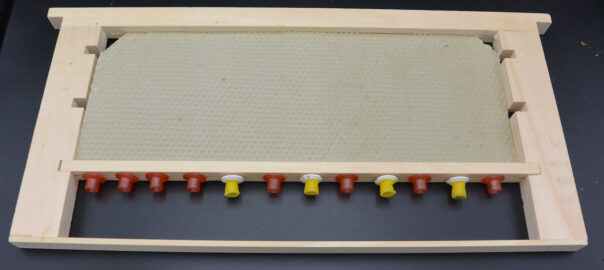
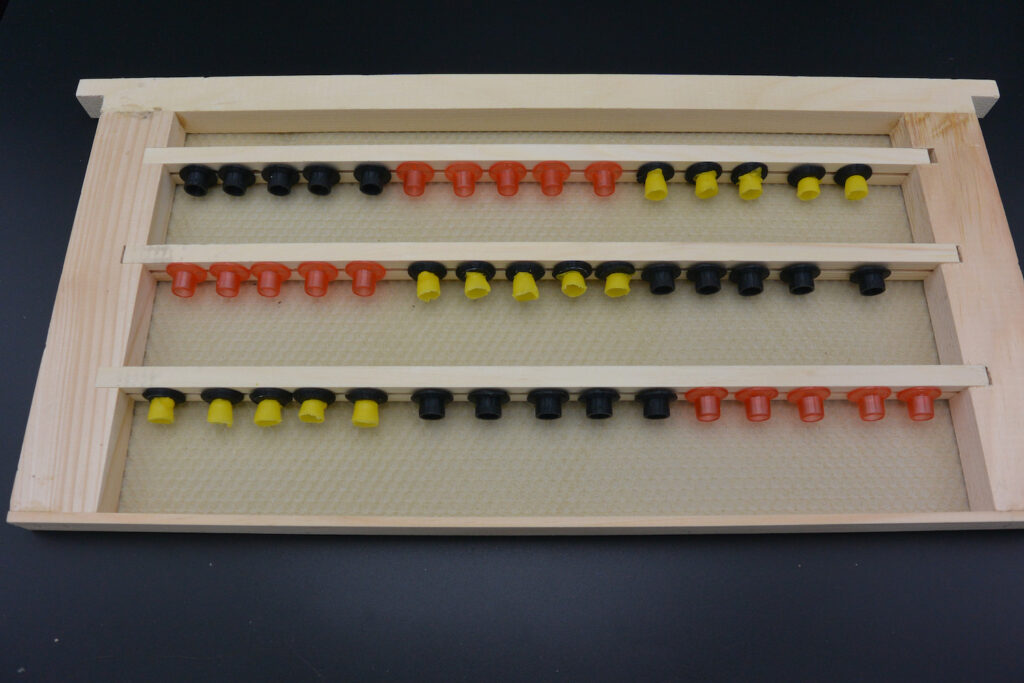
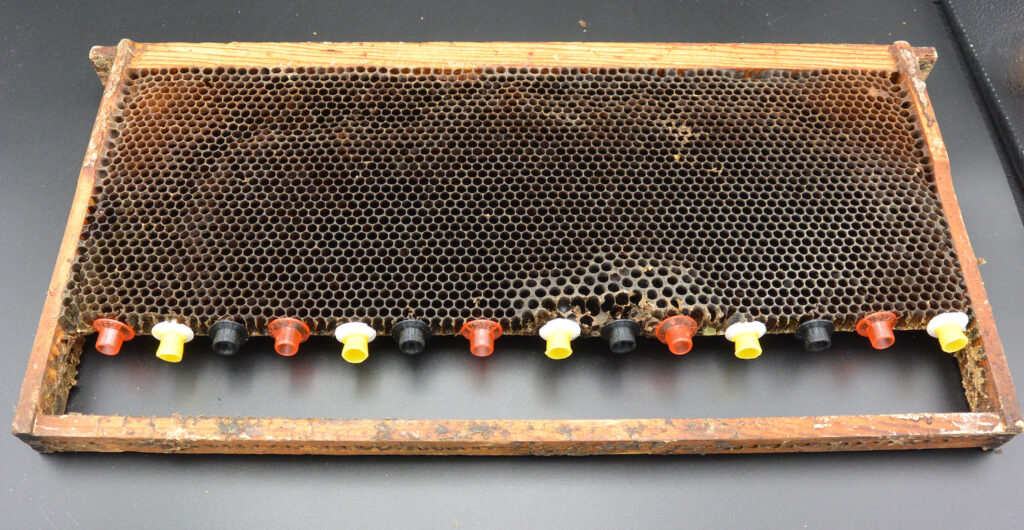
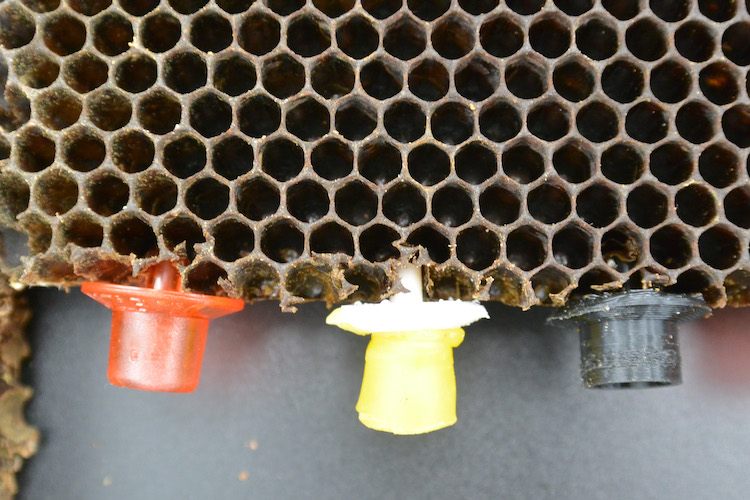

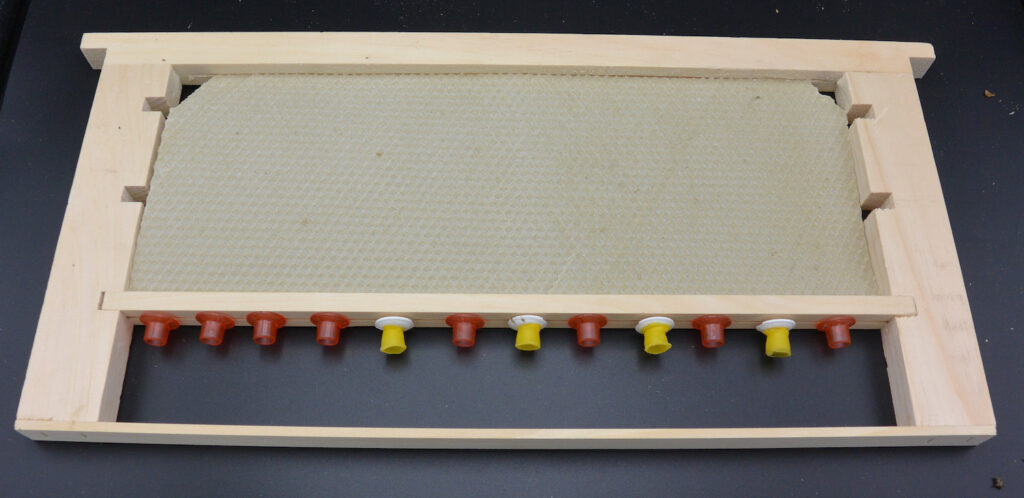

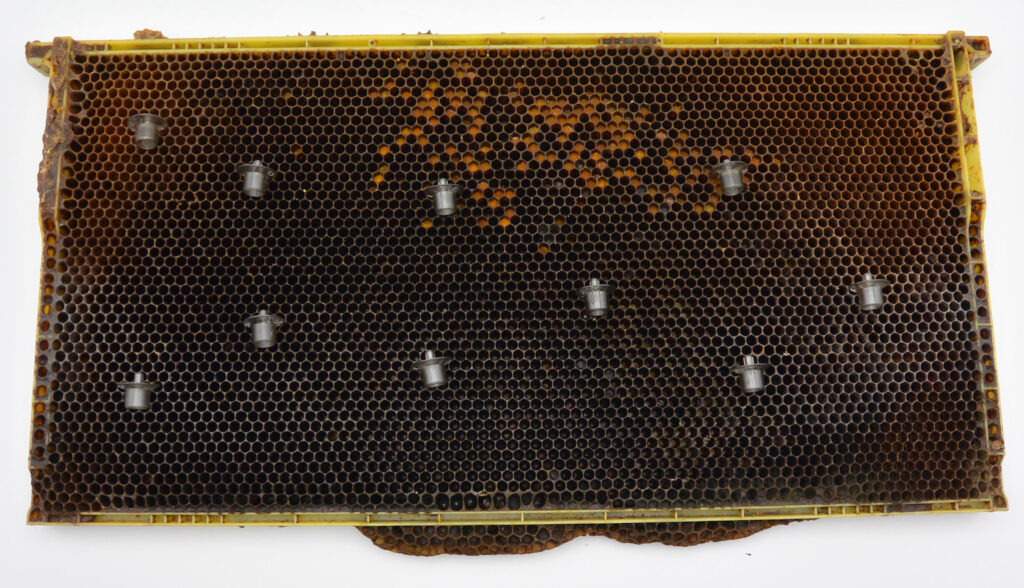


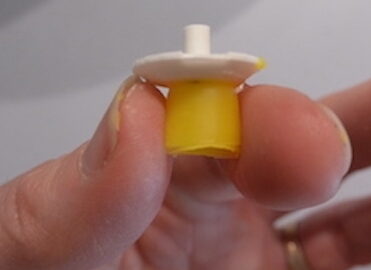
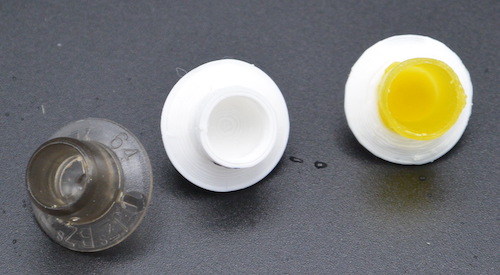
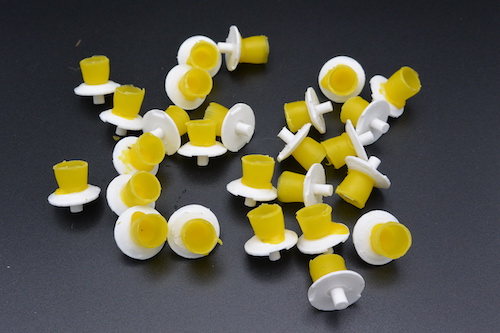

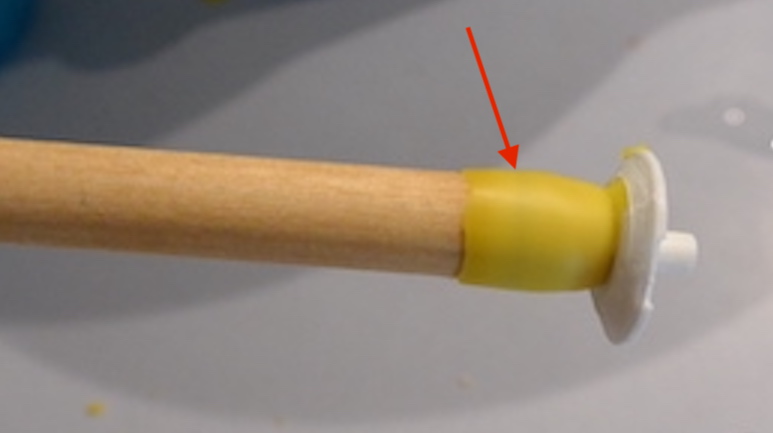

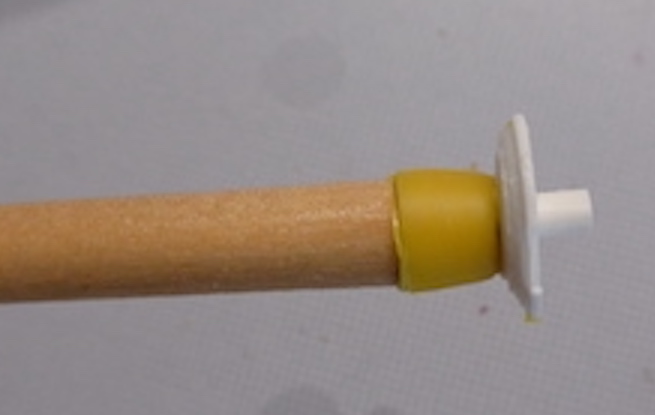
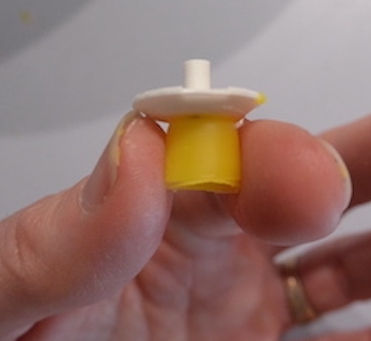


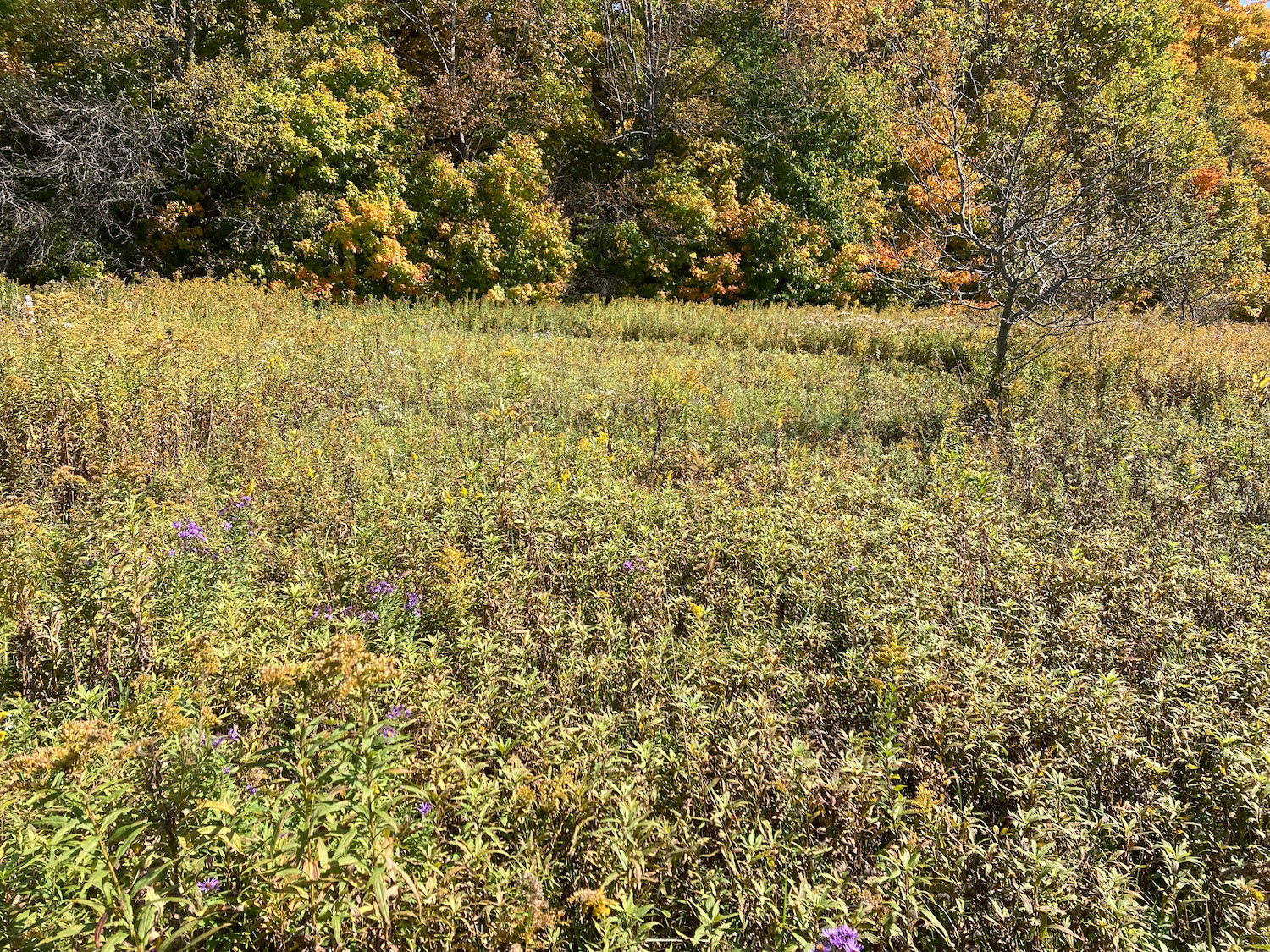 Nary a bloom in sight where I wanted a river of flowers. I will have to try next year, and hope the weather cooperates this time.
Nary a bloom in sight where I wanted a river of flowers. I will have to try next year, and hope the weather cooperates this time.